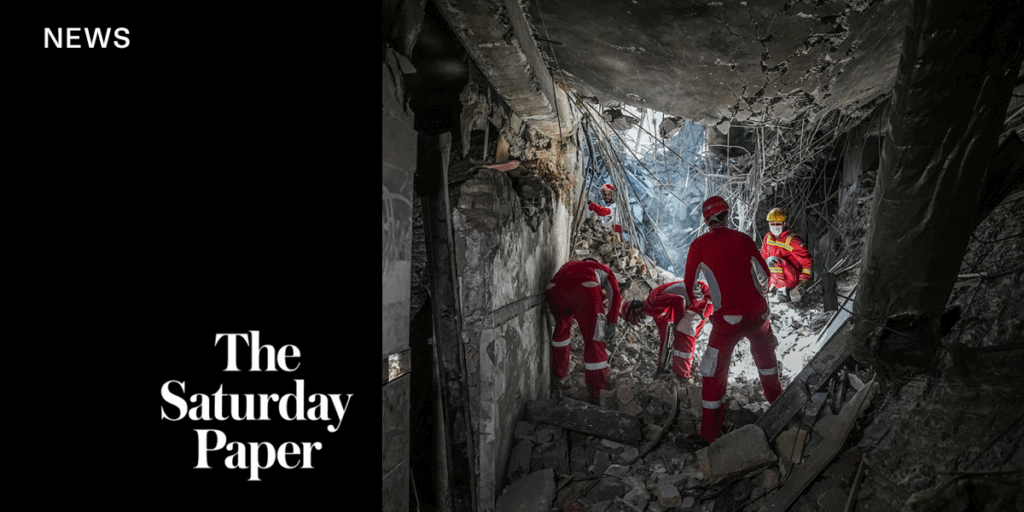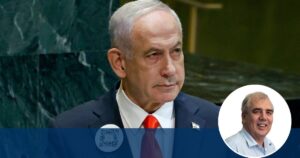
United States President Donald Trump made a surprise intervention in the escalating Israel-Iran conflict, launching a military strike before swiftly announcing a ceasefire this week. The move has sparked debate over his claim that he has “obliterated” Iran’s nuclear facilities.
Trump’s decision to enter the conflict came last weekend, targeting Iran’s three main nuclear facilities. In retaliation, Iran launched approximately 14 missiles at Al Udeid Air Base in Qatar, the largest American base in the Middle East. However, Iran, seemingly aiming to avoid further escalation, provided an early warning of the attack. Thirteen missiles were intercepted, and one missed its target. Trump responded by urging calm, stating, “They’ve gotten it all out of their system.”
Following the Iranian attack, Trump secured the support of Israel’s Prime Minister Benjamin Netanyahu for a ceasefire and enlisted Qatar’s emir to engage with Iranian officials, who also agreed to halt hostilities. “This is a war that could have gone on for years and destroyed the entire Middle East, but it didn’t,” Trump declared on social media.
Background of the 12-Day Conflict
The conflict, which Trump referred to as the “12-day war,” began on June 13 when Israel initiated strikes on Iranian nuclear sites, military installations, and nuclear scientists using planes and drones. Israel quickly established control over Iran’s airspace, targeting nuclear and military sites as well as energy facilities and the state broadcaster. Meanwhile, Iran retaliated with drones and ballistic missiles targeting Israeli cities, with an estimated 10% of its 550 missiles evading Israeli defenses.
Despite repeated strikes, Israel was unable to significantly damage Iran’s underground facility at Fordo, which is built beneath a mountain. This led to Trump’s deployment of American B-2 bombers equipped with 14,000-kilogram bombs to target Fordo, Natanz, and Isfahan last Sunday.
According to Iranian officials, the 12 days of war resulted in 627 deaths in Iran. However, the US-based Human Rights Activists News Agency (HRANA) reported 1,054 deaths and 4,476 injuries. Israeli officials reported 28 deaths and 3,238 hospitalizations in Israel.
Nuclear Fallout and Strategic Implications
The US and Israel have claimed success in dismantling Iran’s nuclear program, although initial assessments suggest the attacks may have only delayed the program by a few months. Echoing Trump’s assertion, Netanyahu stated, “We sent Iran’s nuclear program down the drain.” However, a classified Pentagon assessment reportedly indicated that the strikes failed to destroy two targeted sites, merely sealing off entrances without collapsing underground chambers.
Before the conflict, Iran was believed to possess around 400 kilograms of uranium enriched to 60% purity, nearing weapons-grade levels. The whereabouts of this stockpile remain unknown, raising concerns about future developments.
Iran has expressed mixed signals regarding its potential withdrawal from the Treaty on the Non-Proliferation of Nuclear Weapons, a move that would prevent inspectors from monitoring its program. Rafael Grossi, head of the International Atomic Energy Agency, commented on the significant damage likely inflicted on Fordo, though he noted that a full assessment of the underground damage remains elusive.
Political Ramifications and Future Prospects
Iran’s President Masoud Pezeshkian declared victory, asserting that Israel failed to destroy Iran’s nuclear capabilities or incite unrest. Despite this, the damage to Iran’s nuclear program and the loss of military leaders have raised questions about the regime’s stability, which has faced economic challenges and popular unrest in recent years.
During the conflict, Iranian authorities arrested 823 individuals on security and political charges, including 286 for expressing opinions, and executed at least seven accused of treason. Analysts predict potential power struggles within the regime and increased repression to curb dissent.
Trump’s intervention drew criticism from his MAGA supporters, who accused him of breaking his promise to avoid Middle Eastern conflicts. However, the ceasefire announcement appeased many critics, showcasing Trump’s unpredictability, a trait valued by his base.
In Israel, the conflict bolstered Netanyahu’s political standing, with a Channel 12 poll indicating increased support for his Likud party. Despite this, Netanyahu continues to face challenges with the ongoing conflict in Gaza, where his strategy remains unclear.
Israeli journalist Chaim Levinson noted, “Netanyahu’s standing has risen… This gives Netanyahu greater room to manoeuvre, both to end the Gaza war and to head into elections riding a victory narrative.”
As the region grapples with the aftermath of the 12-day conflict, the focus shifts to the implications for regional stability and the potential for renewed diplomatic efforts to address longstanding tensions.





